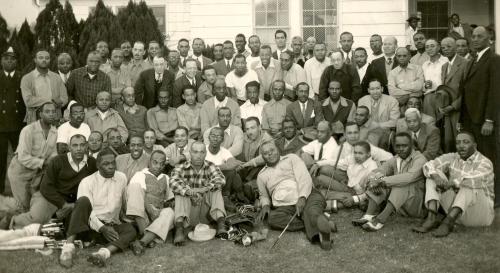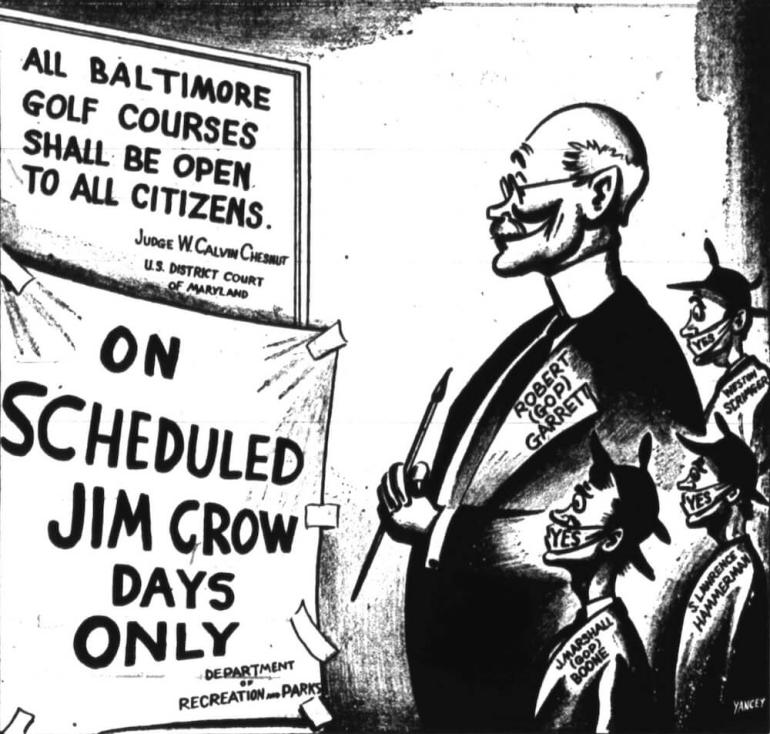Baltimore’s Monumental Golf Club, November 3, 1945. Courtesy of the AFRO American newspaper.

Carroll Park Golf Course
The city’s remaining parcel of the Carroll industrial plantation languished until Park Director Charles Hook decided to build a 9-hole golf course there. Like Baltimore’s three other municipal courses, the Carroll Park Golf Course was reserved for “Whites Only” when it opened in 1923. Efforts by African Americans to access the course began in the 1930s and were spearheaded by the Monumental and Cosmopolitan men’s golf clubs and the Pitch & Putt women’s club.
Alternating Days
In 1934, a short-lived proposal allowing blacks to use Carroll Park Golf Course ended with the Park Board setting up a cumbersome schedule of alternating black and white days at various golf courses. Then in 1936, the Carroll Park Golf Course became exclusively available to African Americans. However, the sand greens, lack of a clubhouse or drinking water, and swamps on the 35-acre course proved it was not “Separate but Equal.” Black golfers brought a lawsuit but lost when the court ruled that the Park Board had the power to enforce segregation.
Black Course
A brief period of desegregated play followed, while Carroll Park Golf Course was closed for renovations. However, when it reopened in late 1945, Carroll Park Golf Course again became the only municipal golf course open to African Americans. Black golfers brought a new lawsuit in 1947, which resulted again in white and black rotating days at each of Baltimore’s four courses.
In 1950, the composition of the seven-member Park Board changed dramatically in the aftermath of a corruption scandal. Board President Robert Garrett, who was a staunch segregationist, resigned over perceived inaction to financial irregularities that he had exposed. Three additional board members stepped down after allegations of shady dealings.
Links Desegregate First
Threatened with more legal action and now comprised of new members, the Park Board agreed to end segregation at the four golf courses on June 25, 1951. They also agreed to designate certain fields, courts, and playgrounds open for interracial play. The Park Board officially ended segregation in all Baltimore parks on November 18, 1955, in the wake of the landmark Supreme Court decision Brown v. Board of Education.





